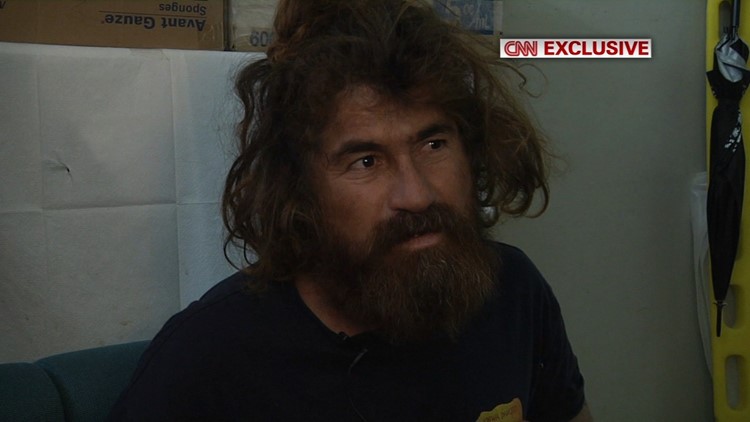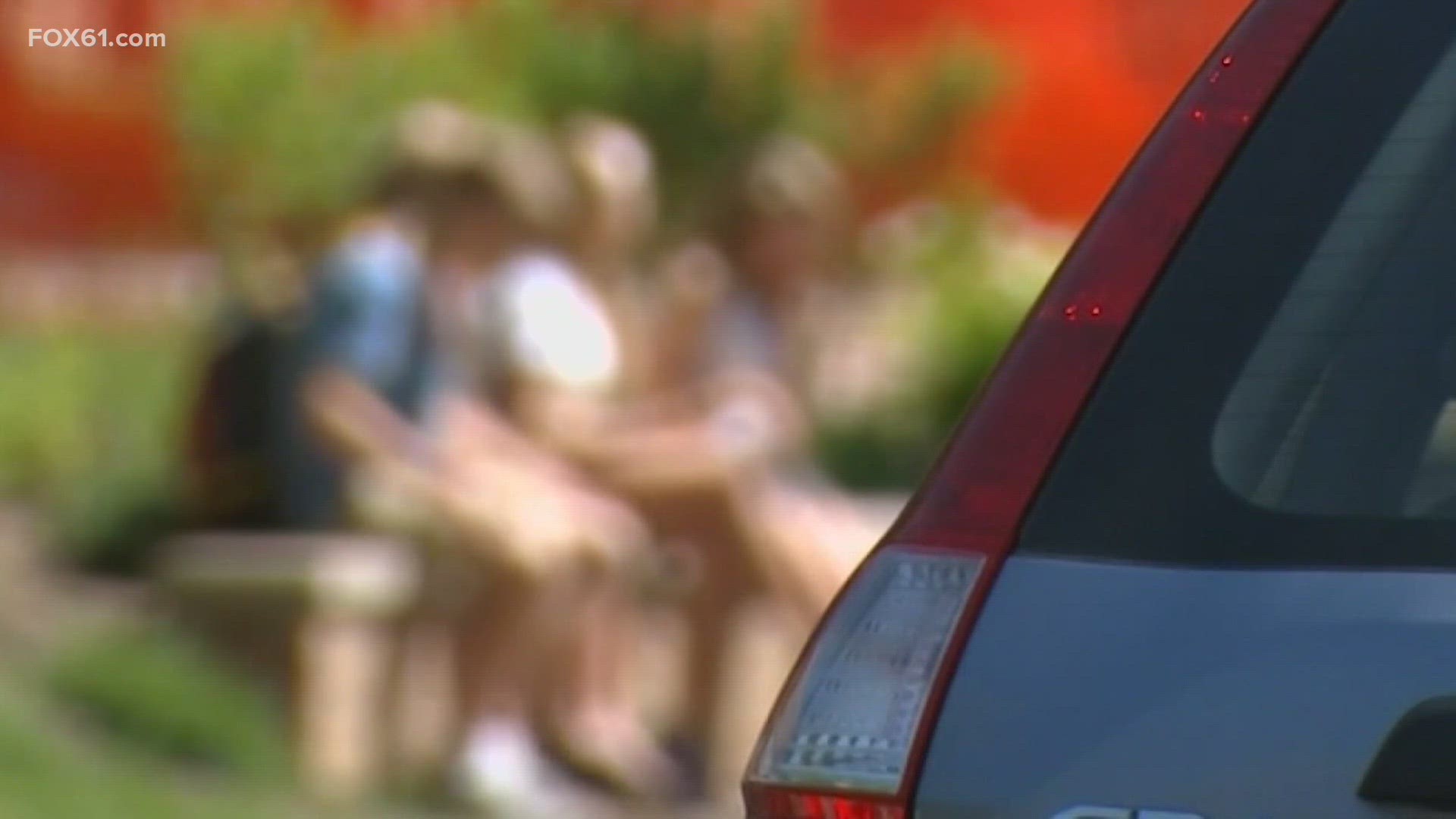“Buenos dias,” Salvador Alvarenga said to his friend, who was propped up in the bow of their fishing boat. “What is death like?”
Ezequiel Córdoba, his body hardening and turning purple, did not reply. So Alvarenga answered for his dead sea mate. “Good. It is peaceful.” Alvarenga looked out to the horizon, the ocean as endless as it had been for the last two months that they’d been lost at sea.
“Why wasn’t it both of us? Why am I the one who continues to suffer?” Alvarenga asked the corpse. He remembered Córdoba, hysterical in the early days, crying about his mother and starving for tortillas. But in his final hours, the suffering lifted. Alvarenga craved the peace Córdoba had unfairly found by dying.
Alvarenga continued his one-sided conversation with Córdoba’s body for six days before he realized he was conversing seamlessly with a dead man. Alvarenga snapped out of a haze, knowing he was slowly going crazy. He decided he needed to drop Córdoba’s body into the ocean to save his own sanity. Alvarenga easily picked up his friend’s corpse, the thin frame now blackened under the hot sun, and slipped him into the water.
“Who am I going to talk to? Why is he dead and not me?” Alvarenga was now suffering an unimaginable, hellish journey on the ocean, alone.
An unimaginable number
Four hundred thirty-eight.
Even now when Alvarenga speaks aloud the number of days he spent on the Pacific Ocean floating in a 25-foot fishing boat without a sail or motor, the number seems too large to comprehend. But he lived through every day of it.
November 17, 2012 began like any other day for the intrepid shark fishermen of Costa Azul, Mexico, Alvarenga remembers. The renegade fishermen, operating out of small, nimble fiberglass fishing boats, called themselves Los Tiburoneros, or “Shark Hunters.” They fished in the risky deep-sea waters 50 to 100 miles offshore. An El Salvador native with little formal education, Alvarenga found a way to make money in the Mexican coastal village. But he also found a way of life: play hard, work hard, fish deep.
Alvarenga, then 35, planned a two-day fishing trip with Córdoba, an inexperienced 22-year-old. Alvarenga knew a storm was coming, but he’d weathered many before.
“It wasn’t the storm that was the problem,” remembered Alvarenga. “My engine gave out.”
For seven days, the storm thrashed their boat. The seas were so rough, Córdoba was tossed into the water once and was saved only because Alvarenga pulled him back in by the hair. In addition to the engine, Alvarenga lost his radio and fishing gear. The boat had no cover — just an icebox, a large trunk used by the fishermen to store their catch until they got to shore. The men also had a bucket, which they used to bail water out of the boat.
By the time the storm lifted, Alvarenga knew they had drifted far from Mexico. He could see airplanes flying overhead. But with no mast and no flares, the tiny boat was invisible in the vast ocean.
“We didn’t think about hunger at first,” Alvarenga said. “It was the thirst. We had to drink our own urine after the storm. It wasn’t until a month later that we finally got some rain water.”
Fishing without a hook
Alvarenga had been fishing since he was a child. That ingrained skill would now keep him and Córdoba alive. In El Salvador, he’d learned how to catch a fish with no hooks or lines by sticking his bare hands in the water. Now deep in the Pacific, the fish would skim past his hands until he snatched them with his fingers.
But the few fish he caught weren’t enough. Their bodies were starved for water and protein; Alvarenga could feel his throat closing in on itself. Extreme sun blasted the men, and their only refuge was huddling together in their icebox.
Sea birds began lingering around their boat. For them, the fiberglass vessel was an unexpected place to rest in the vast water. When Alvarenga grabbed the first one, he recalled, Córdoba stared at him in horror. He ripped it apart like a raw chicken. But unlike processed chicken, these sea birds had a vital source of liquid: their blood.
“We cut their throats and drank their blood. It made us feel better.” Desperately hungry, they tried to eat every part of the thin birds, right down to their feathers. The only part they discarded were the contents of the birds’ stomachs, which were often filled with plastic and garbage. Everything in the ocean became a possible food source — sea turtles, small sharks, and seaweed. But the ocean and the skies rarely provided for them consistently. The men counted the days in between food. Three days, catch one fish. Another three days, catch two birds.
“I’d heard about Mexicans who’d done this before,” Alvarenga said. “How did they do it? How come they were spared? ‘I shouldn’t be a coward,’ I told myself. I prayed a lot. And I asked God for patience.”
Patience had long left Córdoba, Alvarenga said. “He would cry a lot, talking about his mama, eating tortillas, and drinking something cold. I helped him as much as I could. I would hug him. I told him, ‘We’ll be rescued soon. We’ll hit an island soon.’ But he would sometimes get violent, screaming that we were going to die.”
It was raining the day Córdoba died, recalls Alvarenga. The two men, as they’d done almost daily for weeks, were huddled inside the icebox. They prayed. Córdoba asked Alvarenga to visit his mother and said that he was now with God.
“We said our goodbyes. He wasn’t in pain. He was calm. He didn’t suffer.”
Jealousy over Córdoba’s death overwhelmed Alvarenga. He contemplated suicide in the days after dropping his friend’s body in the ocean. Only the fear that God would condemn his soul to hell stopped him from killing himself.
Keeping the faith
Alvarenga was more than 10 years older than Córdoba. Alvarenga believes he survived, in part, because of his experience in the open sea, but he also credits simple optimism and faith that God would save him.
He focused on finding food. He prayed more and sang hymns, even in the most devastating moments at sea. Alvarenga remembers numerous cargo ships passing him by, but he doesn’t know if all the ships were real or if he imagined them. “I would signal them and nothing would happen,” he said. “But I thought God will determine which boat will save me.”
In the end, it was not a boat, but land that saved Alvarenga. After 438 days of floating on endless water, he saw mountains. When he felt he was close enough, Alvarenga dove into the water, swimming toward what he would later learn was one in the string of the Marshall Islands.
“I hit the ground first. My boat hit the ground second. I felt the waves, I felt the sand, and I felt the shore. I was so happy that I fainted on the sand. I didn’t care if I died at that point. I was so relieved. I knew at that point I didn’t have to eat any more fish if I didn’t want to.”
Alvarenga connected with residents near the beach where he landed on January 29, 2014, but no one spoke Spanish so they resorted to pictures and hand gestures to communicate. They gave him water but he immediately began to bloat, so the residents called the mayor’s office and Alvarenga was ushered onto a big shipping boat that transported him to the Marshall Islands’ biggest hospital.
Wearing tattered clothes and with his hair and beard matted wildly from 14 months at sea, Alvarenga stepped off the boat to news cameras and reporters. In days, he went from the most solitary existence imaginable to the most-wanted interview on the planet.
Alvarenga described himself as a prisoner who had been in solitary confinement for more than a year. He had no idea how to behave. “I was so scared. I was afraid of people. I couldn’t find the right words after being alone for so long.”
Is he telling the truth?
Skepticism immediately followed the images broadcast around the world of the remarkable castaway. Alvarenga couldn’t face them. He asked the hospital to shield him from reporters who were sneaking in to the hospital. He began to call them “las cucarachas,” or the cockroaches. Even on his flight back to El Salvador, his very first time on a plane, reporters sat near him and tried to snap pictures.
Alvarenga didn’t care that journalists didn’t believe his story. The University of Hawaii and a number of independent oceanographers would later say his improbable survival was entirely possible. Buoys and weather models show an ocean drift matched his 6,000-mile journey west. He’s collaborated with journalist Jonathan Franklin in a book about his remarkable survival, called “438 Days.”
Alvarenga kept his promise to Córdoba’s mother. He visited her in Mexico and delivered her son’s dying message. He now lives in El Salvador, mending a relationship with his daughter, Fátima, whom he had abandoned as a child. He doesn’t drink and continues to pray every day.
The man who once reveled in his life as a member of “Los Tiburoneros” now can’t bear to enter the ocean. He doesn’t fish. Alvarenga says he sees a therapist who is urging him to go back into the water, for his sanity. “I’m afraid,” he says. “There are still nights when I can’t sleep. The ocean keeps haunting me.”
He is admittedly a different man. He may be a better man. And Salvador Alvarenga says he is absolutely a grateful man. “I’m happy to be alive. I’m happy to be with my family. I’m proud to be what I am. I am simply glad I’m here.”



